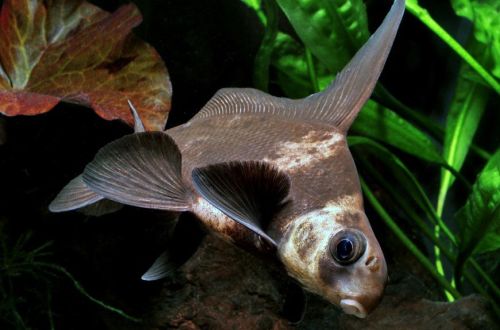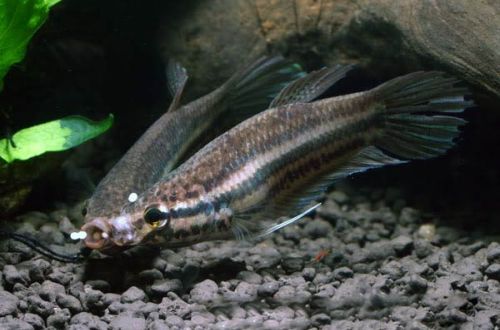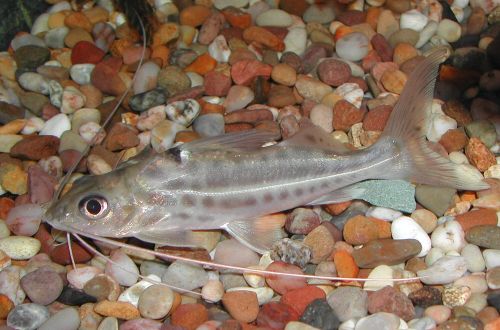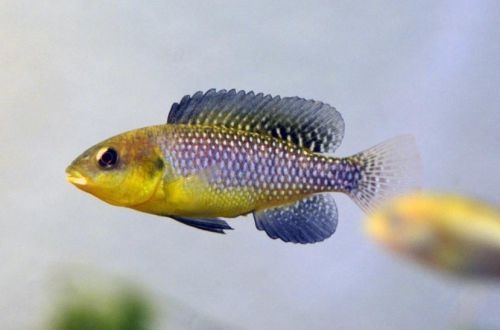
Chuukchan
Chukuchan or fish The Chinese sailboat, scientific name Myxocyprinus asiaticus, belongs to the Catostomidae family. Also known as the Chinese sucker fish because of the special structure of the mouth, with its help it scrapes off organic plaque from the surface of the stones, and can also attach itself to them, thereby resisting the current. A fairly rare fish, in addition, in a number of countries, including European ones, it is prohibited for import, which only fuels interest in it. True, keeping Chukuchan in a home aquarium is unlikely to succeed due to its size.

Contents
Habitat
It comes from the territory of China, where it lives in the vast Yangtze River basin. Inhabits the main channels of rivers and their tributaries. Adult fish are found mainly at depth in regions with fast currents, while juveniles prefer shallow water and still pools with stagnant water.
In its natural habitat, it is endangered due to active human activities (dam construction, pollution, active fishing, etc.). China is listed in the register of endangered species of animals.
Brief information:
- The volume of the aquarium – from 1000 liters.
- Water and air temperature – 15-21°C
- Value pH — 6.0–8.0
- Water hardness – 3–21 dGH
- Substrate type — stony
- Lighting – subdued
- Brackish water – no
- Water movement – moderate or strong
- The size of the fish is 80–90 cm.
- Food – any sinking food
- Temperament – conditionally peaceful
- Keeping in a group of 3-4 fish
Description
A distinctive feature of the species is a high long dorsal fin, resembling a sail, and giving the body a triangular shape. The remaining fins are also of considerable size in comparison with the proportions of the body. A similar feature is characteristic only of young individuals, adult fish are greatly elongated and become unlike their juveniles.
It is worth noting that the color and pattern of the body changes as they grow older. With a length of 8–10 cm, the color is brownish with wide diagonal light stripes. The head is also light in color. With a length of about 15–20 cm, the brown color changes to dark gray, the body pattern remains the same – striped, but the fins turn from a uniform color into specks. Adult fish, whose length can reach 80–90 cm, and weight – 40 kg, are mostly gray, and only one stripe remains in the body pattern, moreover, horizontal, stretching from head to tail.
Sexual dimorphism is weakly expressed; outwardly it is almost impossible to distinguish males from females, especially among juveniles. Only during the spawning period, in males, the fins are painted in red tones.
Food
In nature, they feed at the bottom, eating almost everything that they can swallow. The diet consists of small crustaceans, aquatic insects, mollusks, worms and plants. In a home aquarium environment, fresh, live or frozen bloodworms, brine shrimp, worm pieces, etc., as well as most sinking dry foods rich in protein and herbal supplements, are accepted.
Maintenance and care, arrangement of the aquarium
A small group of these fish needs large aquariums with hundreds or even thousands of liters. The design usually repeats the natural habitat – the rocky bottom of the river, littered with large boulders and snags.
Arrangement and maintenance of such large objects is very costly and requires a lot of experience, so fish like Chukuchan usually do not belong to the category of amateur aquarists and are beyond the scope of our site. Although young fish can be kept in a home aquarium, but very soon, when they grow up, the question will arise – what to do with them.
Behavior and Compatibility
Not aggressive and able to get along with fish of similar size. Content in a group of 3-4 individuals. It is worth noting that although they do not belong to carnivores, still too small species can become an accidental victim of the Chinese sailboat.
Breeding / breeding
In nature, puberty is reached by six years. The mating season begins in February-March and is accompanied by long migrations upstream in shallow water. It is not possible to recreate the necessary conditions for spawning in aquariums. Juveniles are produced on specialized fish farms artificially, with the help of hormones.





